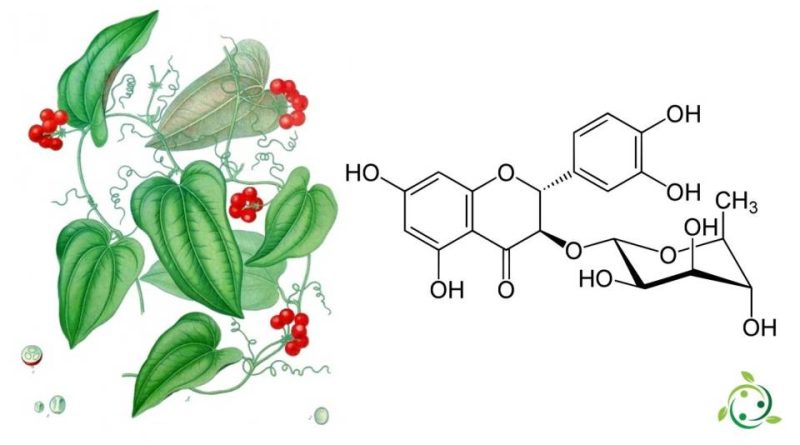Astilbin
Astilbin
Astilbin, whose term in the official IUPAC nomenclature is: (2R, 3R) -3 ′, 4 ′, 5,7-Tetrahydroxy-3- (α-L-rhamnopyranosiloxy) flavan-4-one is a flavo nolo with brute or molecular formula: C21H22O11.
Astilbin is a molecule of natural origin which is found as a metabolic product in some plants; among these in the Hypericum perforatum, in the Dimorphandra mollis, in the leaves of Harungana madagascariensis, in the rhizome of Astilbe thunbergii, in the root of Astilbe odontophylla, in the rhizome Smilax glabra and Smilax aristolochiifolia and in the bark of Hymenaea martiana.
This substance can be isolated from Kohki tea, obtained from Engelhardtia chrysolepis (huang-qui) and is also present in some wines. In this regard, astilbin and other specific compounds can be used as markers to optimize the various stages of production of white wines: times and temperatures of contact with the skins, dose of sulfur, pressing regimes, degree of oxidation, contact with wood etc ..
Astilbin can act as an insecticide against Anticarsia gemmatalis and Spodoptera frugiperda. Antibacterial activity and activity in burn wound healing are shown in vitro. Astilbin is also used in traditional Chinese medicine.
Among the derived molecules, it is emphasized that 3′-O-methylastilbine shows immunosuppressive activity against contact dermatitis.
Warning: The information shown is not medical advice and may not be accurate. The contents are for illustrative purposes only and do not replace medical advice.

